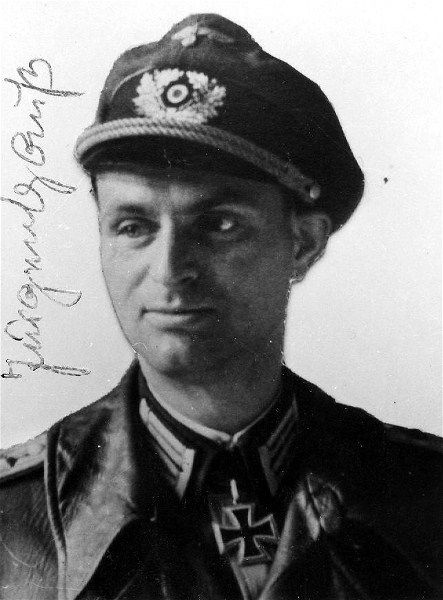Gauß, Jürgen
- Date of birth:
- March 18th, 1918 (Stettin/Pommerania, Germany)
- Date of death:
- September 4th, 1996 (Bad Mergentheim/Baden-Württemberg, Germany)
- Nationality:
- German
Biography
In service from November 3rd 1937.
Jürgen Gauß served with the Bundeswehr from May 2nd, 1956 until March 31st, 1977 and there finally reached the rank of Oberst.
Do you have more information about this person? Inform us!
- Period:
- Second World War (1939-1945)
- Awarded on:
- January 30th, 1941
- Period:
- Second World War (1939-1945)
- Awarded on:
- October 20th, 1942
- Period:
- Second World War (1939-1945)
- Rank:
- Hauptmann (Captain)
- Unit:
- I. / Panzergrenadier-Regiment 25
- Awarded on:
- January 27th, 1945
- Period:
- Second World War (1939-1945)
- Rank:
- Hauptmann (Captain)
- Unit:
- Führer Kampfgruppe / 12.Panzer-Division / 16.Armee / Heeresgruppe Kurland
- Awarded on:
- March 28th, 1945
“The Führer has awarded the Knight’s Cross of the Iron Cross to Hauptmann Jürgen Gauss, born in Stettin, leader of an armoured Kampfgruppe in a Pomeranian Panzer-Division:
During the last days of the Fifth Battle of Courland the Russians achieved a deep penetration near Frauenburg with strong tank/infantry forces, and threatened an important railway line. Two motorized enemy battalions pushed forward into a patch of forest with about 15 AFVs, and another 30-40 enemy tanks occupied a different forest.
Thus Hauptmann Gauss commenced a counterattack with his numerically inferior Kampfgruppe. He smashed the foremost enemy armoured spearheads, destroyed the bulk of the escorting infantry, drove far beyond the ordered objective and cleared a second Soviet position in a swift attack, meaning that a village captured by the enemy as well as the edge of a forest was retaken. During this bold strike the Russians sustained bloody losses, which included 17 tanks, 4 anti-tank guns and numerous light infantry weapons destroyed. This was achieved with minimal friendly armour losses.
These heavy losses forced the enemy to suspend their breakthrough attempts here.”
Submitted on March 17th 1945.
Preliminary document and decoration on March 30th 1945 to Heeresgruppe Kurland.
Sources
- Photo 1: Willi Schumacher
- Photo: Willi Schumacher collection
- - WEGMANN, GÜNTER, Die Ritterkreuzträger der Deutschen Wehrmacht 1939-1945, Biblio-Verlag, 2009.
- Die Ordensträger der Deutschen Wehrmacht (CD), VMD-Verlag GmbH, Osnabrück, 2002
- Fellgiebel W.P., Elite of the Third Reich, The recipients of the Knight's Cross of the Iron Cross 1939-1945: A Reference, Helion & Company Limited, Solihull, 2003, ISBN 1-874622-46-9
- Patzwall K., Scherzer V., Das Deutsche Kreuz 1941-1945, Geschichte und Inhaber Band II, Verlag Klaus D. Patzwall, Norderstedt, 2001, ISBN 3-931533-45-X
- Die Träger des Ritterkreuzes des Eisernen Kreuzes 1939-1945
- Federl, C., Die Ritterkreuzträger der Deutschen Panzerdivisionen 1939-1945, VDM Heinz Nickel, Zweibrücken, Germany, 2000






